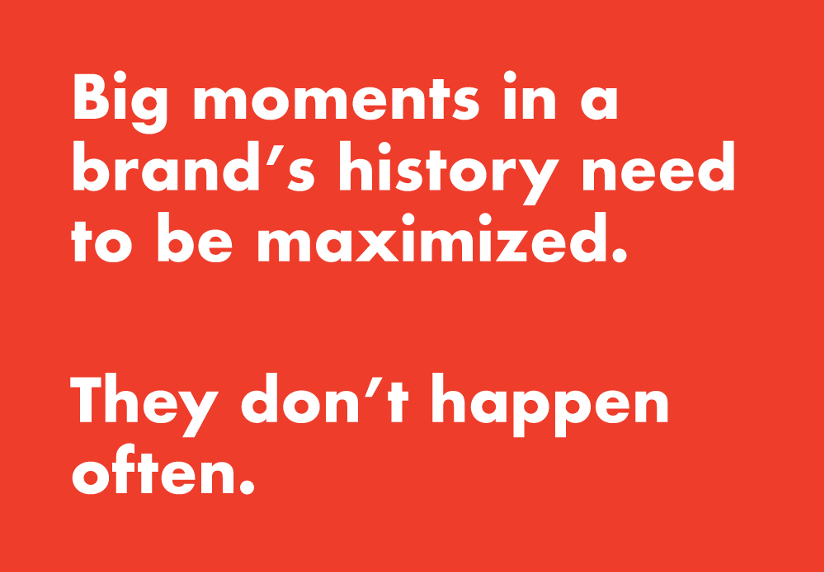Jack Blog
March 20th, 2020
In the last decade plus, product launch events have become kind of a big deal – critical, noteworthy moments towards building and maintaining a strong brand.
Apple set the modern-day standard.
Nike made a statement without even saying a word.
T-Mobile broke the industry mold (most times without even a tangible product!)
And Tesla, while perceived a handful of different ways, set a new precedent in stagecraft.
The list goes on.
These moments can stay in the minds of people for years.
Why? They’re singular and visual. People tend to remember those types of things.
They’re also ownable. As a brand, sharing your story and purpose is one of the best ways to connect with an audience. So it’s not just the product itself that requires a lot of planning and consideration, it’s the reveal and the supporting experience, because typically, an announcement from your competition is coming, too.
A case in point
Earlier this year, Jack Morton partnered with Cruise to launch the Origin: the first self-driving, all-electric, ride-sharing vehicle aimed at re-defining the way people move through cities. It’s a competitive landscape, with automotive and tech companies alike angling to take the reins and drive this space forward.
As our team dug deeper into the story, it was clear that while the product was really interesting (and truly, it is, give it a look) it was just as much about the drastic positive improvements it could have on our lives if we just committed to this transportation paradigm shift.
Think about it…
Nearly 40,000 people die in road accidents each year.
Cities are already pumping out way too much carbon into our air, and their populations are set to increase by 3 billion by 2050.
Cumulatively, drivers sit in traffic an average of 12 days a year – think of what else you could be doing with that time!
Too many of us still rely on the private, human driven, gas-powered cars, which greatly contribute to these issues.
So the narrative became: The status quo of how we move around is broken. Cruise is here to “move beyond the car”, which can improve road safety, the environment, and our day-to-day commutes.
This storyline drove the launch, which now wasn’t just a product reveal, it incorporated a complete experience.
As attendees walked in the doors, floor wayfinding doubled as pertinent statistics and data points. In an atrium area, those stats were brought to life, with a collection of visceral, museum-like, installations that sparked realization and conversation about the status quo leading up to the main announcement. In the theatre, the Origin was unveiled, complete with key proof points built on use cases and real-time tech demos, leaving everyone in awe of what the future could actually hold.

If you’re reading this, you probably are exploring how to do a launch event in a smart, strategic way. Here’s some key principles brands big and small need to consider:
- Why over What. Context is critical for any new announcement. If you want to change behavior and advance the story, it’s essential to clearly demonstrate relevance. For Cruise’s Origin launch, it wasn’t just a new autonomous, electric ride-sharing. It was an opportunity to shed light on how broken transportation is today, with a clear path to a better tomorrow.
- Punch above your weight. No matter where you are in terms of market share or company trajectory, take this rare opportunity to show your legitimacy and commitment to your mission. When all eyes are on you, exhibit that what you’re doing is taking your company and industry to the next level. Exuding confidence at every touchpoint is critical.
- Seeing is believing. What people see is equally important to what they hear. According to new research out of UCLA, vision frequently influences what you hear. The senses are intrinsically linked, and one shouldn’t be substituted for the other. Leading with eye catching visuals, interactive moments and touchpoints is critical to establishing an emotional connection with a brand, even before the new product is unveiled.
For the Cruise Origin launch event, the team created “This Status Quo Gallery”, a collection of installations built as a visual representation of a statistic focused on three major issues symptomatic of the status quo in transportation: dangerous roads, polluted cities, and wasted time driving.
While clever and engaging, they communicated the harsh, even sad, realities of today – making the context of “why” really resonate.

By turning a launch event into a human experience versus a product reveal, brands can create a more lasting emotional connection with an audience. This is how you stay top of mind – something every company is ultimately looking for.